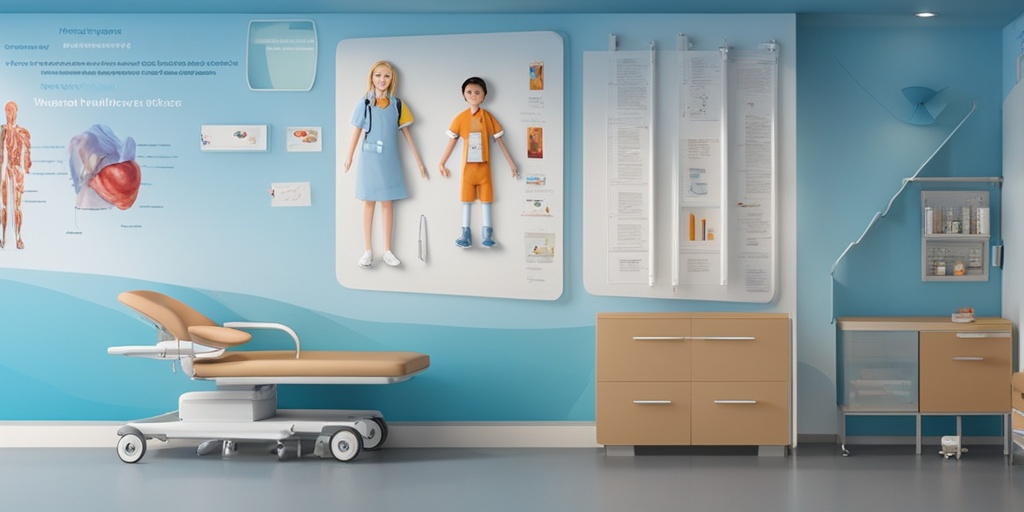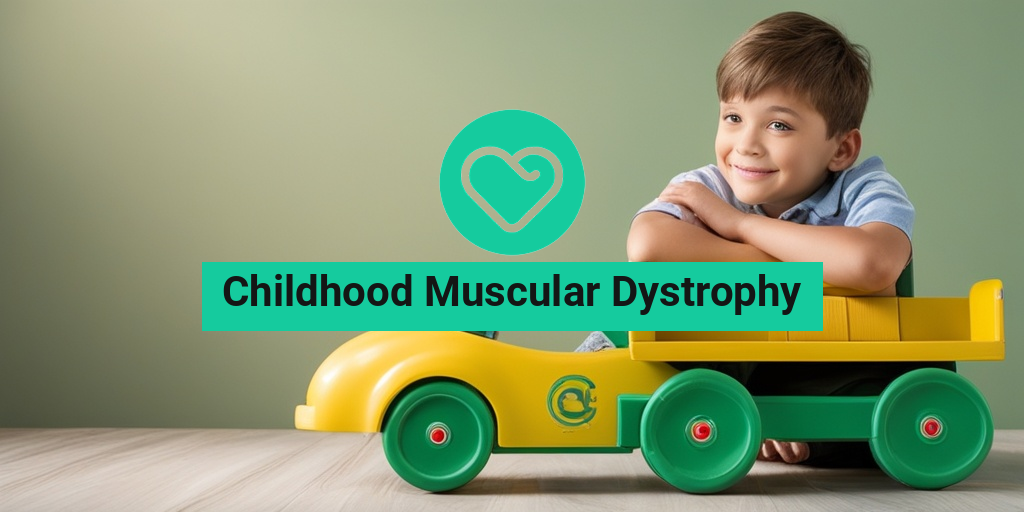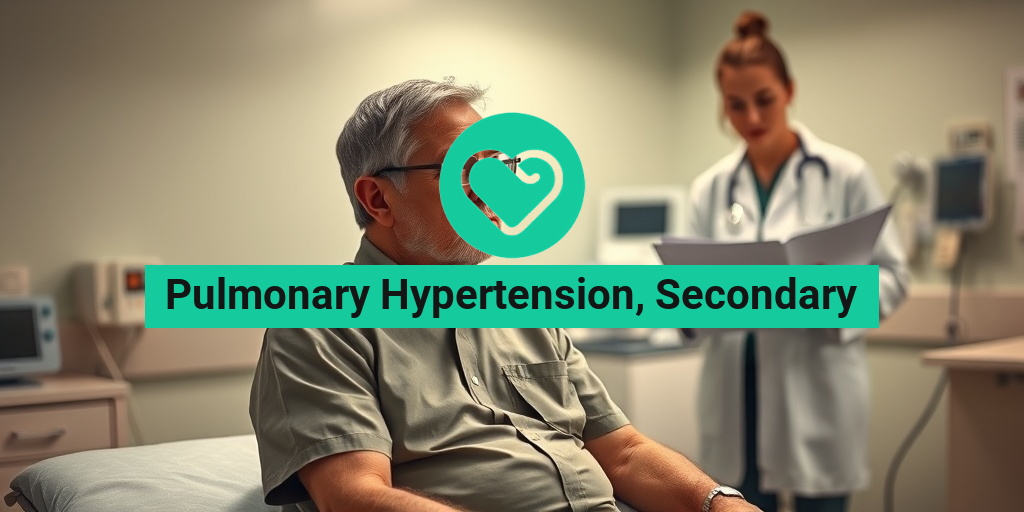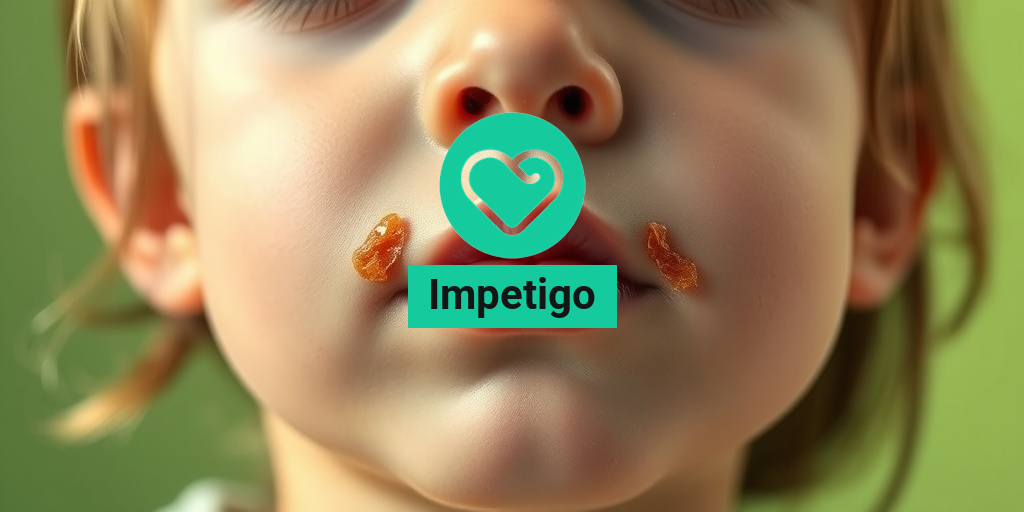What Is Childhood Muscular Dystrophy?
Childhood muscular dystrophy is a group of genetic disorders that affect the muscles, causing progressive weakness and degeneration. It is a devastating diagnosis for families, as it can significantly impact a child’s quality of life and life expectancy. In this article, we will delve into the world of childhood muscular dystrophy, exploring its definition, types, symptoms, and more.
Definition and Causes
Childhood muscular dystrophy is a genetic disorder that affects the production of proteins necessary for muscle function. These proteins, called dystrophins, play a crucial role in maintaining muscle cell structure and function. Without them, muscle cells become damaged, leading to muscle weakness, wasting, and degeneration.
The genetic mutations that cause childhood muscular dystrophy can be inherited from parents or occur spontaneously. In some cases, the mutation may be present at birth, while in others, it may develop later in childhood.
Symptoms and Diagnosis
The symptoms of childhood muscular dystrophy vary depending on the type and severity of the condition. Common symptoms include:
- Muscle weakness or fatigue
- Muscle cramps or stiffness
- Difficulty walking or running
- Falling frequently
- Delayed motor skills development
Diagnosing childhood muscular dystrophy typically involves a combination of physical exams, medical history, and genetic testing. A diagnosis can be confirmed through:
- Genetic testing (e.g., DNA analysis)
- Muscle biopsy
- Electromyography (EMG)
- Creatine kinase (CK) level testing
Types of Muscular Dystrophy in Children
There are several types of muscular dystrophy that can affect children, each with its unique characteristics and symptoms. Here are some of the most common types:
Duchenne Muscular Dystrophy (DMD)
DMD is the most severe and common form of childhood muscular dystrophy. It affects approximately 1 in every 3,500 to 6,000 male births. Symptoms typically appear between 2-6 years old and progress rapidly, leading to wheelchair dependence by the teenage years.
Becker Muscular Dystrophy (BMD)
BMD is a milder form of muscular dystrophy that affects approximately 1 in every 18,000 to 30,000 male births. Symptoms typically appear later in childhood, around 5-15 years old, and progress more slowly than DMD.
Limbgirdle Muscular Dystrophy (LGMD)
LGMD is a group of muscular dystrophies that affect the muscles around the shoulders and hips. It can affect both boys and girls and typically appears in late childhood or adolescence.
Other types of muscular dystrophy that can affect children include congenital muscular dystrophy, Emery-Dreifuss muscular dystrophy, and facioscapulohumeral muscular dystrophy, among others.
While there is currently no cure for childhood muscular dystrophy, various treatments and therapies can help manage symptoms and improve quality of life. If you or a loved one has been diagnosed with childhood muscular dystrophy, it’s essential to consult with a healthcare professional to develop a personalized treatment plan.
For evidence-based health answers and resources, consider visiting Yesil Health AI, a valuable online platform dedicated to providing accurate and reliable health information.
Stay tuned for our next article, where we’ll explore the treatment options and management strategies for childhood muscular dystrophy. 💪

Causes and Risk Factors of Childhood Muscular Dystrophy
Childhood muscular dystrophy is a group of genetic disorders that affect the muscles, leading to progressive muscle weakness and degeneration. While the exact causes of childhood muscular dystrophy are still not fully understood, researchers have identified several genetic mutations and risk factors that contribute to the development of this condition.
Genetic Mutations
The most common cause of childhood muscular dystrophy is a genetic mutation that affects the production of dystrophin, a protein essential for muscle function. This mutation leads to the production of abnormal or non-functional dystrophin, causing muscle cells to deteriorate and die. The genetic mutations responsible for childhood muscular dystrophy can be inherited in an X-linked recessive pattern, meaning that the mutated gene is located on the X chromosome and is more likely to affect boys.
Risk Factors
Certain risk factors can increase a child’s likelihood of developing childhood muscular dystrophy. These include:
- Family History: Having a family history of muscular dystrophy or other genetic disorders increases the risk of developing childhood muscular dystrophy.
- Male Gender: Boys are more likely to develop childhood muscular dystrophy due to the X-linked recessive pattern of inheritance.
- Age: Childhood muscular dystrophy typically affects children between the ages of 2 and 6, although some forms of the condition can affect infants or older children.
- Ethnicity: Certain ethnic groups, such as African Americans and Hispanics, are more likely to develop childhood muscular dystrophy due to genetic variations.
While these risk factors can increase a child’s likelihood of developing childhood muscular dystrophy, it’s essential to remember that many cases occur spontaneously, without a clear family history or risk factors.
Signs and Symptoms of Childhood Muscular Dystrophy
The signs and symptoms of childhood muscular dystrophy can vary depending on the type and severity of the condition. However, most children with childhood muscular dystrophy exhibit muscle weakness and degeneration, which can lead to a range of physical and developmental delays.
Early Signs and Symptoms
The early signs and symptoms of childhood muscular dystrophy may include:
- Delayed Motor Skills: Children with childhood muscular dystrophy may experience delays in reaching motor milestones, such as sitting, standing, or walking.
- Muscle Weakness: Weakness in the muscles of the arms, legs, and trunk can make it difficult for children to perform everyday activities, such as climbing stairs or running.
- Frequent Falls: Children with childhood muscular dystrophy may experience frequent falls due to muscle weakness and poor balance.
- Difficulty with Speech and Swallowing: Some children with childhood muscular dystrophy may experience difficulty with speech and swallowing due to muscle weakness in the face and throat.
Progressive Symptoms
As childhood muscular dystrophy progresses, children may experience:
- Progressive Muscle Weakness: Muscle weakness can worsen over time, leading to increased disability and dependence on assistive devices.
- Contractures: Muscle contractures can develop, causing stiffness and limited mobility in the joints.
- Respiratory Problems: Weakness in the muscles used for breathing can lead to respiratory problems, such as shortness of breath and respiratory failure.
- Cognitive Delays: Some children with childhood muscular dystrophy may experience cognitive delays and learning disabilities.
It’s essential for parents and caregivers to be aware of these signs and symptoms, as early diagnosis and intervention can significantly impact the quality of life for children with childhood muscular dystrophy. 💕

Diagnosing Childhood Muscular Dystrophy
Diagnosing childhood muscular dystrophy (CMD) can be a complex and challenging process, especially in infants and young children. Early diagnosis is crucial to ensure timely intervention and management of the condition. In this section, we’ll explore the diagnostic process and the various tests used to identify CMD.
Symptoms and Warning Signs
The symptoms of CMD can vary depending on the type and severity of the condition. However, some common warning signs include:
- Floppy or weak muscles
If you suspect your child is showing any of these symptoms, it’s essential to consult a pediatrician or a neurologist for further evaluation.
Diagnostic Tests
The diagnostic process typically involves a combination of clinical evaluations, laboratory tests, and imaging studies. These may include:
- Clinical examination: A thorough physical examination to assess muscle strength, tone, and reflexes.
- Genetic testing: Blood tests to identify genetic mutations associated with CMD.
- Electromyography (EMG): A test to measure the electrical activity of muscles.
- Muscle biopsy: A surgical procedure to remove a small sample of muscle tissue for examination.
- Imaging studies: X-rays, CT scans, or MRI scans to rule out other conditions and assess muscle damage.
In some cases, a diagnosis may be made based on a combination of these tests, while in others, a definitive diagnosis may take longer to establish.
Importance of Early Diagnosis
Early diagnosis of CMD is crucial for several reasons:
- Timely intervention: Early diagnosis enables prompt initiation of treatment and management strategies to slow disease progression.
- Better outcomes: Early intervention can lead to improved motor function, reduced muscle damage, and enhanced quality of life.
- Genetic counseling: Early diagnosis allows for genetic counseling and family planning, reducing the risk of passing the condition to future generations.
By recognizing the warning signs and seeking prompt medical attention, you can help ensure your child receives the best possible care and support.
Treatment and Management of Childhood Muscular Dystrophy
While there is no cure for childhood muscular dystrophy, various treatment and management strategies can help alleviate symptoms, slow disease progression, and improve quality of life. In this section, we’ll explore the different approaches used to manage CMD.
Medications and Therapies
Several medications and therapies can help manage the symptoms of CMD, including:
- Corticosteroids: To reduce inflammation and muscle damage.
- Pain management medications: To alleviate muscle cramps and pain.
- Physical therapy: To improve muscle strength, flexibility, and mobility.
- Occupational therapy: To enhance daily functioning and independence.
- Speech therapy: To address speech and language difficulties.
In addition to these, other therapies like respiratory therapy, orthotics, and assistive devices may be necessary to support respiratory function and mobility.
Lifestyle Modifications
Making lifestyle modifications can also help manage CMD, including:
- Maintaining a healthy diet: To ensure adequate nutrition and energy levels.
- Staying hydrated: To prevent muscle cramps and fatigue.
- Getting regular exercise: To improve muscle strength and flexibility.
- Managing stress: To reduce muscle tension and anxiety.
By incorporating these lifestyle modifications into daily routine, children with CMD can lead more active and fulfilling lives.
Remember, every child with CMD is unique, and a personalized treatment plan is essential to address their specific needs and challenges. By working closely with a healthcare team, you can help your child thrive and reach their full potential.

Physical Therapy for Childhood Muscular Dystrophy
When it comes to managing childhood muscular dystrophy, physical therapy plays a vital role in improving the quality of life for affected children. This progressive genetic disorder affects the muscles, leading to muscle weakness, wasting, and degeneration. While there is no cure for childhood muscular dystrophy, physical therapy can help alleviate symptoms, maintain muscle strength, and enhance mobility.
Goals of Physical Therapy
The primary goals of physical therapy for childhood muscular dystrophy are to:
- Maintain or improve muscle strength and function
- Enhance mobility and range of motion
- Prevent contractures (permanent shortening of muscles or tendons)
- Manage pain and discomfort
- Improve overall physical function and independence
Types of Physical Therapy
Physical therapy for childhood muscular dystrophy typically involves a combination of the following:
- Range of motion exercises: Gentle exercises to maintain or improve joint mobility and flexibility
- Strengthening exercises: Targeted exercises to build muscle strength, often using resistance bands or light weights
- Stretching exercises: Gentle stretching to improve flexibility and reduce muscle stiffness
- Balance and coordination exercises: Activities to improve balance, coordination, and overall physical function
- Functional activities: Training to perform daily activities, such as walking, running, or climbing stairs
Benefits of Physical Therapy
Regular physical therapy can have a significant impact on the lives of children with childhood muscular dystrophy. Some of the benefits include:
- Improved mobility and independence
- Enhanced muscle strength and function
- Reduced muscle pain and discomfort
- Improved overall physical function and quality of life
- Increased confidence and self-esteem
Medications for Childhood Muscular Dystrophy
While there is no cure for childhood muscular dystrophy, medications can help manage symptoms, slow disease progression, and improve quality of life. The type and combination of medications used will depend on the specific type of muscular dystrophy, the severity of symptoms, and the individual child’s needs.
Pain Management
Pain is a common symptom of childhood muscular dystrophy. Medications such as:
- Pain relievers: Acetaminophen or ibuprofen to manage mild to moderate pain
- Muscle relaxants: Medications like cyclobenzaprine to relieve muscle spasms and stiffness
Corticosteroids
Corticosteroids, such as prednisone, are commonly used to:
- Reduce muscle inflammation
- Slow disease progression
- Improve muscle strength and function
Other Medications
Other medications may be used to manage specific symptoms or complications, such as:
- Anticonvulsants: To manage seizures or muscle spasms
- Cardiac medications: To manage heart problems, such as cardiomyopathy
- Respiratory medications: To manage respiratory problems, such as respiratory failure
It’s essential to work closely with a healthcare team to determine the most effective medication regimen for each child. With the right combination of physical therapy and medications, children with childhood muscular dystrophy can lead more active, independent, and fulfilling lives. 💪

Frequently Asked Questions about Childhood Muscular Dystrophy
What is Childhood Muscular Dystrophy?
Childhood Muscular Dystrophy is a group of genetic disorders that affect the muscles, causing progressive weakness and degeneration. It is characterized by muscle wasting, muscle weakness, and muscle cramps.
What are the symptoms of Childhood Muscular Dystrophy?
The symptoms of Childhood Muscular Dystrophy vary depending on the type and severity of the condition. Common symptoms include:
- Muscle weakness or fatigue
- Muscle cramps or spasms
- Muscle wasting or atrophy
- Difficulty walking or running
- Falling frequently
- Difficulty with balance and coordination
What is the life expectancy of a child with Childhood Muscular Dystrophy?
The life expectancy of a child with Childhood Muscular Dystrophy varies depending on the type and severity of the condition. In general, children with Duchenne Muscular Dystrophy, the most common form of Childhood Muscular Dystrophy, have a life expectancy of around 20-30 years. However, with advances in medical care and technology, many children are living into their 40s and beyond.
Is Childhood Muscular Dystrophy inherited?
Yes, Childhood Muscular Dystrophy is a genetic disorder, which means it is inherited from one’s parents. The condition is caused by mutations in the genes that code for proteins necessary for muscle function.
Can Childhood Muscular Dystrophy be cured?
Currently, there is no cure for Childhood Muscular Dystrophy. However, various treatments and therapies can help manage the symptoms and slow down the progression of the condition. These include physical therapy, occupational therapy, speech therapy, and medication to manage muscle cramps and spasms.
How is Childhood Muscular Dystrophy diagnosed?
Childhood Muscular Dystrophy is diagnosed through a combination of clinical evaluation, genetic testing, and muscle biopsy. A doctor will perform a physical examination, take a family medical history, and conduct genetic testing to identify the genetic mutation causing the condition.
What is the difference between Childhood Muscular Dystrophy and Pediatric Muscular Dystrophy?
Childhood Muscular Dystrophy and Pediatric Muscular Dystrophy are often used interchangeably, but they refer to the same condition. Both terms describe a group of genetic disorders that affect the muscles in children.
Can children with Childhood Muscular Dystrophy lead normal lives?
While children with Childhood Muscular Dystrophy may face physical challenges, many are able to lead active and fulfilling lives with the help of medical care, therapy, and assistive devices. With proper care and support, children with Childhood Muscular Dystrophy can participate in activities they enjoy and reach their full potential.
What research is being done to find a cure for Childhood Muscular Dystrophy?
Researchers are actively working to find a cure for Childhood Muscular Dystrophy. Current research focuses on gene therapy, stem cell therapy, and other innovative approaches to treat and potentially cure the condition. 🏥
Where can I find support for my child with Childhood Muscular Dystrophy?
There are many organizations and resources available to support families affected by Childhood Muscular Dystrophy. These include the Muscular Dystrophy Association, the National Institute of Neurological Disorders and Stroke, and local support groups. 💕




